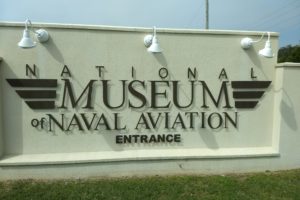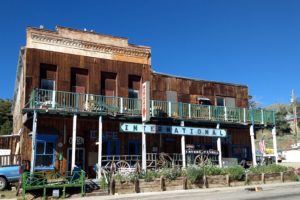The first part of this post takes us along Nicholson Street to learn from those working with wood. We looked at joiners who made the insides of homes look fancy in part 6. Now we’re going to look at those who built homes and those who built furniture, harpsichords, and coffins.

“Carpentery was one of the most common trades in Williamsburg. Watch our experts use hand tools to transform trees into lumber, cut and raise heavy timber building frames, and enclose new structures with siding and roofing.” (info from website)

Their project was to split these rounds of wood so it could be made into shingles for buildings around the city.
The master carpenter told us that the carpenter’s yard has been in a variety of places in Williamsburg, but after they built this shed to cover their equipment, the yard finally has a place to call home.


Cabinetmaker – Crafting Fine Furniture

“Cabinetmakers made fashionable furniture like tables, chairs, desks, and chest of drawers. Watch expert woodworkers fashion the intricate details of luxury products with period hand tools.” (info from website) The cabinetmakers in this shop also make harpsichords.

entryway



inside the shop
Barney was in woodworker’s heaven when we came to this shop. Much of it reminded him of the TV show The Woodwright Shop where Roy Underhill did every thing with hand tools. He actually has been to this shop and filmed some episodes here!

The work done in the shop is based on the requirements that the apprentices have to finish in their 6 years of training. The following picture is a cabinet from the mid-1700s that an apprentice is in the process of reproducing.


brickyard – From Soft Clay to Solid Foundations
“During the summer and spring, brickmakers mold and dry thousands of bricks. Help out by taking off your shoes and stomping clay with your bare feet! In the fall, see the bricks you helped create bake in a giant, wood-fired oven. As you tour the town, keep an eye out for masons using these bricks on a variety of projects.” (info from website)
Now, this place was one of the most interesting we visited at Williamsburg! We’re used to going to a store to buy bricks since we have trucks that can transport them to where we need them. But in the 18th century, a brickyard had to be built close to where a house or plantation was going to be built so the heavy bricks would be transported more easily by the workers since a pile of bricks is so heavy.

In the 18th century, bricks were made by loading clay mixed with filler like ashes and sand into wooden frames, drying them, and then firing the bricks in a kiln. Bricks have to be made when the weather is warm, so at Williamsburg, they are made between April and the end of September.



During the winter months the apprentices practice their masonry work in the covered area of the previous picture.

After the bricks are fired and the kiln cools down, the bricks are removed from the inside out so they can be used. Indentured servants and slaves were the ones to move the bricks from place to place.
The mortar used between the bricks here at Williamsburg is sand mixed up with crushed oyster shells.

After learning about the process for making bricks, we started noticing the brick homes we saw as we walked along the street. Notice the design on this cause that was made by using different colors of bricks and placing them in the predetermined design. Masons who laid the bricks were true artisans.

Where we live north of Atlanta, many houses are also made of brick. The value of the house can be seen by how many sides are covered with brick. For example, our house has a brick front and HardiePlank siding on the other 3 sides.
street views
Before we get to our final shops at Williamsburg, we wanted to show you some more street views as we walked along. The first 2 pictures we showed you in part 5 when we were pointing out the wagon wheels.





Would you believe that the distance across the street between the sidewalks is 18 yards (54 feet)? That’s a wide road. And we know that this was the width of the road in the 18th century because of the remaining foundations of buildings along the main road.
Here are some other sites at Williamsburg that we thought you’d like to see:

final trade shops
We almost missed stopping in the local grocery store to see how it operated in the mid-18th century since we didn’t see an open sign or someone standing in front of it, but on our map we saw that we could get a bottle of water inside, so we walked in.

While the shop was filled with drinks, sandwiches, and snacks for today’s tastes, the shop worker did show us this list of countries that provided supplies for citizens in Williamsburg around the time of the Revolution.

Because of the shipping provided by the British Navy (before the conflict started) and by other countries, the citizens in Williamsburg had whatever they wanted.
printing office – Mass Communication for the 18th Century
“In an age before TV, radio, and the internet, the printed word was the primary means of long-distance mass communication. Watch and learn as printers set type and use reproduction printing presses to manufacture colonial newspapers, political notices, pamphlets and books.” (info from the website)



bindery – Putting Together Books and Pamphlets
“We might take books for granted today, but in colonial America only the rich could afford a large library. Binding books—especially fancy ones—was a specialized and time-consuming craft. Talk with a binder and learn the arts and mysteries of the trade.” (info from website)

We didn’t get to learn anything in the bindery because both workers were talking with others on topics other than the bindery. Oh well.

public leather works
“Workman at the Public Leather Works cut, mold, and stitch leather and heavy textiles into a variety of necessary products for Virginia’s fighting men.” (info from website)



We asked about leather belts, and the guide told us that men in the 18th century didn’t wear belts since their pants were made especially for them so they didn’t need help keeping their pants up.
more wreaths
We thought you’d like to see some more wreaths that caught our eye as we walked around the city.

final then and now pictures




We’re done! Barney and I so enjoyed sharing Williamsburg with you during both of our visits to the largest living history museum in the world. With its 40 historic sites and trades and 4 historic taverns, it is a wonderful place to visit. We didn’t even go to the 2 world-class art museums that you might really enjoy. Our thanks to all who made these visits welcoming and memorable! Hope you’re able to visit here when you’re on the East Coast.




















